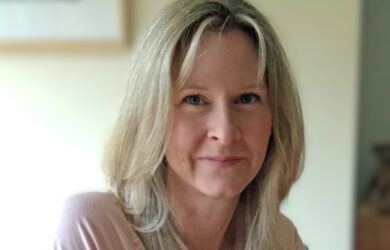Scientists have identified chemicals that could protect vital organs from long-term damage following a heart attack or stroke, according to a new study on which Gates Cambridge Alumnus Edward Chouchani is lead author.
Scientists have identified chemicals that could protect vital organs from long-term damage following a heart attack or stroke, according to a new study on which Gates Cambridge Alumnus Edward Chouchani is lead author.
The researchers now hope the chemicals will provide a starting point for developing new injectable drugs that could be used to prevent some of the long-term damage caused by heart attack and stroke.
During a heart attack or stroke, a clot can starve the heart or brain of blood and oxygen, causing irreversible damage. Further damage is caused when the clot is dislodged and blood rushes back into the heart or brain. Until now, it was unclear how the return of blood flow starts this damage.
In research published today in Nature, scientists led by teams at the MRC Mitochondrial Biology Unit, MRC Cancer Unit and the University of Cambridge, are the first to find that this damage is caused by a build-up of a chemical called succinate. Succinate occurs naturally in the body when sugar and fat is broken down to release the energy stored in food.
The research, which is part-funded by the British Heart Foundation and the Medical Research Council, shows that succinate builds up to abnormally high levels inside an organ when blood flow is limited. When the blood flow returns, the excessive build-up of succinate interacts with oxygen as the blood rushes in to the oxygen-starved tissues. This causes the release of destructive molecules which react with muscle cells in the organ, damaging them.
In the months and years after a heart attack, this damage can ultimately lead to heart failure, a debilitating condition that leaves people unable to carry out everyday tasks like washing themselves or climbing stairs.
Working with mice, the researchers identified the increase in succinate by measuring a range of different chemicals in the vital organs before and after heart attack and stroke, in a technique called metabolomics.
Crucially, the researchers have discovered that they can reduce organ damage in mice and rats by administering simple chemicals, called malonate esters, when blood flow is restored. Malonate esters stop the build-up of succinate and the resulting release of destructive molecules.
Malonate esters are cheap, readily available and are found naturally in fruits like strawberries, apples and grapes, although not in high enough volumes to be beneficial.
The findings could also have implications in surgery where transplanted organs such as the kidney, liver and the heart all suffer damage after they are connected to the transplant patient’s blood flow.
Edward [2008], who completed his PhD in Biological Science in 2013, said: “We feel this paper is a major breakthrough. Our major finding is that the damage that occurs at the point of clinical intervention during a heart attack or stroke is controlled by a defined metabolic process, as opposed to being due to non-specific dysfunction as has been assumed for decades. Our identification and characterisation of this process has allowed us to understand what are the initial mechanisms that cause heart tissue to die during a heart attack, to elucidate a mechanism by which this damage can be prevented and to develop a targeted drug strategy with efficacy at a pre-clinical stage.”
BHF-funded researcher Dr Thomas Krieg from the University of Cambridge, a co-author of the study, added: “Now that we know the specific cause of organ damage after heart attacks and strokes, we can start developing effective drugs to treat the serious after-effects of these conditions.
“There are currently no drugs routinely used that block this cause of damage. But our research shows that simple, cheap chemicals could significantly improve the outcome of patients suffering a heart attack or stroke. We now hope to develop this research further, leading to an effective treatment for people within five to 10 years.”
The research team included scientists from the Medical Research Council (MRC), the University of Cambridge, King’s College London, University College London, the University of Rochester Medical Centre, the University of Glasgow and Addenbrooke’s Hospital in Cambridge and was funded by the British Heart Foundation, MRC, the Canadian Institutes of Health Research and the Gates Cambridge Trust.












